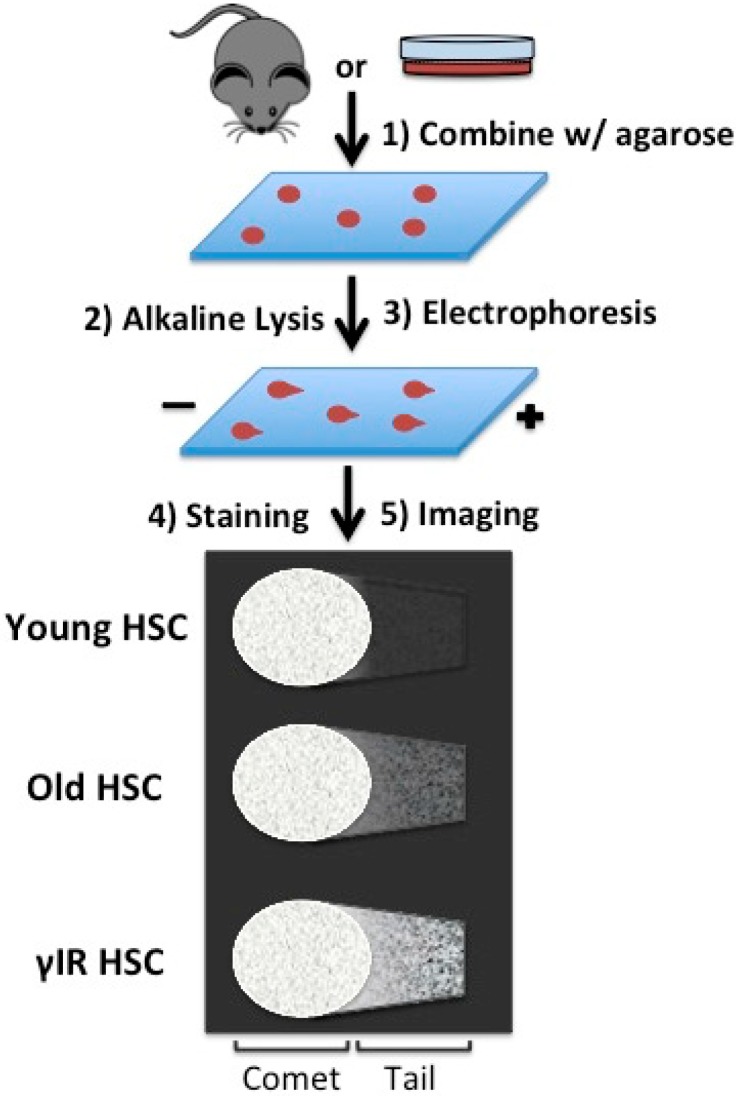Figure 2.
The alkaline comet assay. The alkaline comet assay allows for the direct microscopic measurement of DNA damage. Isolated cells are mixed with low-temperature gelling agarose and applied to a glass slide. Cells are lysed under alkaline conditions in order to detect single and double strand breaks, though a number of lysis procedures have been described for other purposes. After a brief electrophoresis and staining, DNA damage can be visualized microscopically. High molecular weight DNA, reflecting undamaged DNA, remains in the comet, whereas damaged DNA is susceptible to the electrophoretic field and is found in the tail. A number of methods for quantifying and describing the tail to comet relationship have been described. In Beerman, et al. the authors describe a higher frequency of HSCs with moderate-to-severe DNA damage in aged mice as compared to younger mice [28]. Damage is also more severe among aged hematopoietic stem cells as compared to aged hematopoietic progenitors.

